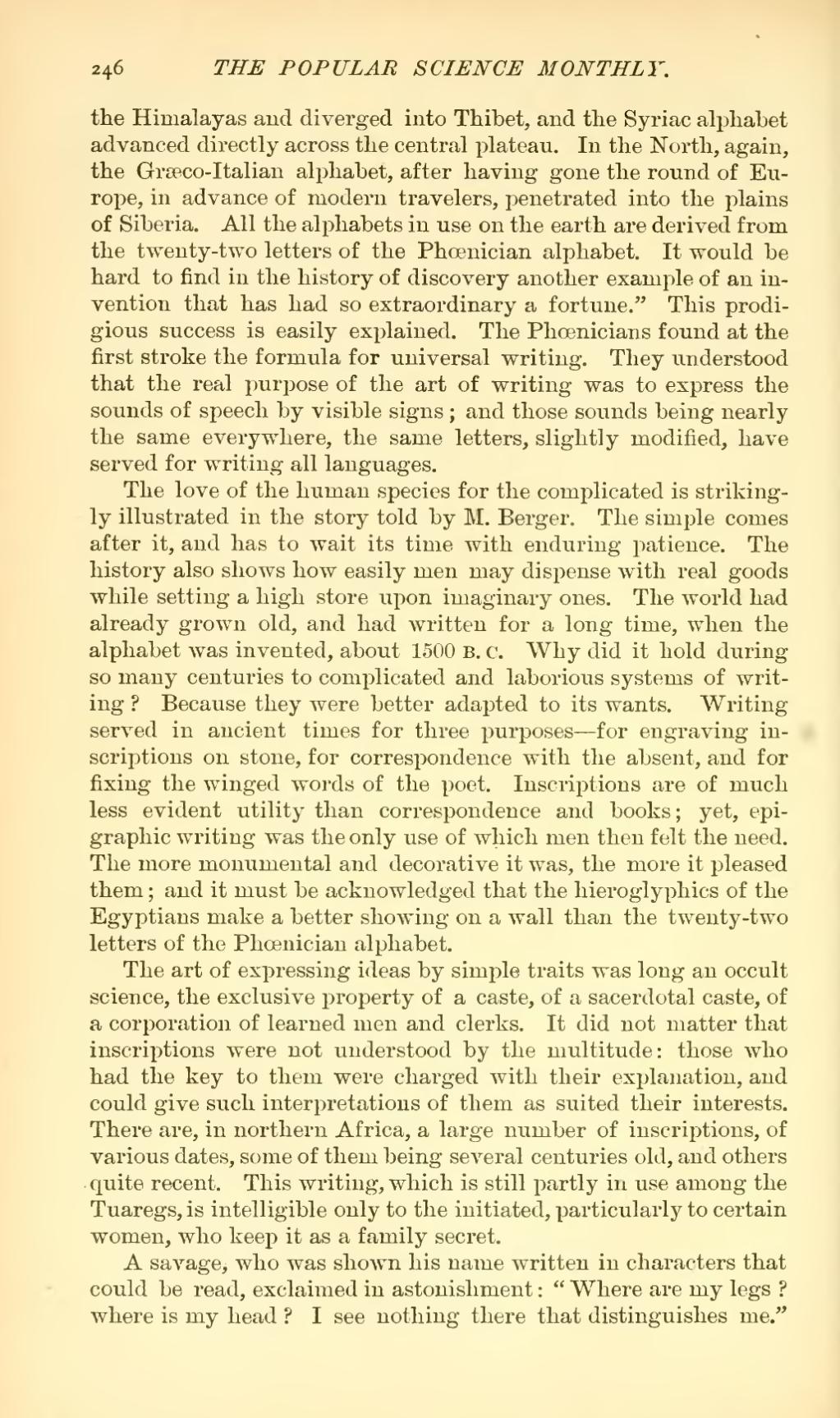the Himalayas and diverged into Thibet, and the Syriac alphabet advanced directly across the central plateau. In the North, again, the Græco-Italian alphabet, after having gone the round of Europe, in advance of modern travelers, penetrated into the plains of Siberia. All the alphabets in use on the earth are derived from the twenty-two letters of the Phœnician alphabet. It would be hard to find in the history of discovery another example of an invention that has had so extraordinary a fortune." This prodigious success is easily explained. The Phœnicians found at the first stroke the formula for universal writing. They understood that the real purpose of the art of writing was to express the sounds of speech by visible signs; and those sounds being nearly the same everywhere, the same letters, slightly modified, have served for writing all languages.
The love of the human species for the complicated is strikingly illustrated in the story told by M. Berger. The simple comes after it, and has to wait its time with enduring patience. The history also shows how easily men may dispense with real goods while setting a high store upon imaginary ones. The world had already grown old, and had written for a long time, when the alphabet was invented, about 1500 b. c. Why did it hold during so many centuries to complicated and laborious systems of writing? Because they were better adapted to its wants. Writing served in ancient times for three purposes—for engraving inscriptions on stone, for correspondence with the absent, and for fixing the winged words of the poet. Inscriptions are of much less evident utility than correspondence and books; yet, epigraphic writing was the only use of which men then felt the need. The more monumental and decorative it was, the more it pleased them; and it must be acknowledged that the hieroglyphics of the Egyptians make a better showing on a wall than the twenty-two letters of the Phœnician alphabet.
The art of expressing ideas by simple traits was long an occult science, the exclusive property of a caste, of a sacerdotal caste, of a corporation of learned men and clerks. It did not matter that inscriptions were not understood by the multitude: those who had the key to them were charged with their explanation, and could give such interpretations of them as suited their interests. There are, in northern Africa, a large number of inscriptions, of various dates, some of them being several centuries old, and others quite recent. This writing, which is still partly in use among the Tuaregs, is intelligible only to the initiated, particularly to certain women, who keep it as a family secret.
A savage, who was shown his name written in characters that could be read, exclaimed in astonishment: "Where are my legs? where is my head? I see nothing there that distinguishes me."
